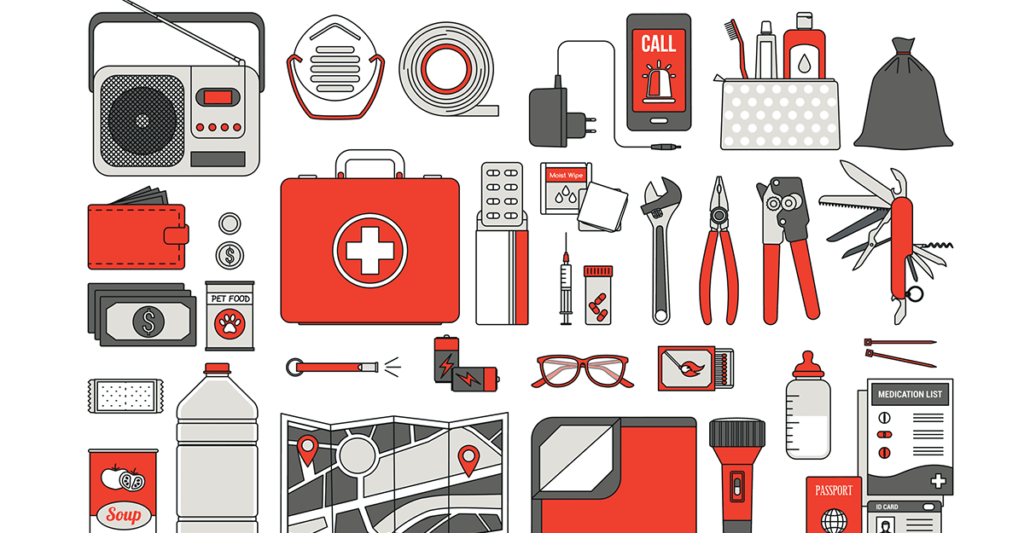
How to Assemble a Home Evacuation Kit
The number of people evacuated for emergencies every year can be very eye-opening: While not everyone complies, hurricanes can result in the evacuation of millions of people, while tens of thousands of people can be asked to evacuate during dangerous wildfires.
Just two examples, in 2018 more than 1 million were evacuated for Hurricane Florence in the Southeast, and more than 52,000 were evacuated for the Camp Fire in California.
Are you, your family, or your loved ones ready to go?
At Regroup Mass Notification, we are pleased to provide a platform authorities and administrators can use to issue critical alerts to people in order to keep them safe and informed. That includes campus shutdowns, shelter-in-place instructions and evacuation alerts.
If your home was to get an evacuation alert, would you be ready? Luckily, there are a lot of resources to help you assemble a home evacuation kit. (There are also many available pre-assembled online, if you are so inclined. Just make sure you store your kit in a place where it will be easy to access in case of emergency, and away from extreme temperatures.)
The Federal Emergency Management Agency, FEMA, and the Red Cross both offer great checklists for people who want to assemble their own kits. Plastic, waterproof tubs or buckets are great places to store your kit. Some basics:
- Three-day supply of non-perishable food and three gallons of water per person
- Can opener
- Copies of important documents (birth certificates, passports, etc.)
- Map marked with evacuation routes
- Prescriptions and other needed medications and supplies, including sanitation supplies
- Change of clothing, blankets and rain gear
- Sunscreen
- Eyeglasses or contact lenses
- An extra set of car keys, credit cards, cash or traveler’s checks
- First aid kit
- Flashlight or headlamp
- Battery-powered radio
For children or pets:
- Pet food, necessary medications and water
- Leashes, pet ID and collars, bowls
- Books, games, puzzles or other activities for children
- Formula, diapers, bottles or baby food if needed
Look to the emergency management agencies in your area to see if there are other items you’ll need for your kit.
Who needs an evacuation kit? Anyone who lives in a region or area that has been evacuated before. People who live in places where there may be floods, hurricanes, wildfires or other extreme weather events should also be prepared.
Even if you don’t live in a place where disasters regularly occur, it’s never a bad idea to prepare for the unexpected. There is peace of mind that can come from being able to respond in an emergency situation without having to panic. Finding necessary items in an evacuation is never easy — especially if the power is out, or emotions are high.
Additional free resources:
For information on how Regroup can help your organization keep your community safe and informed, schedule a demo at Regroup Demo.
Categories
- Regroup Product Guides
- Disaster Recovery
- Employee Safety
- Routine Communications
- Mass Notification
- Critical Event Management
- Emergency Preparedness
- Corporate
- Insurance
- Business Continuity
- Business
- Education
- Uncategorized
- Nonprofit
- Healthcare
- Hospitality
- Government & Public Services
- Our Clients
- Awards
- COVID-19
- Safety & Preparedness
- Announcements